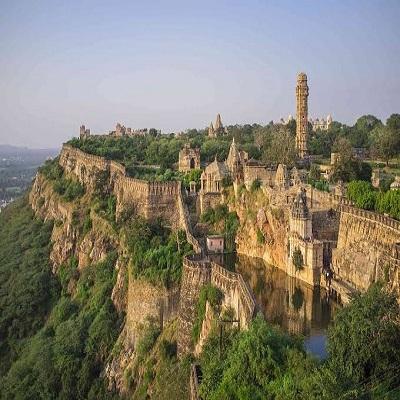
The Chittorgarh (literally Chittor Fort), also known as Chittod Fort, is one of the largest forts in India. It is a UNESCO World Heritage Site. The fort was the capital of Mewar and is located in the present-day city of Chittorgarh. It sprawls over a hill 180 m (590.6 ft) in height spread over an area of 280 ha (691.9 acres) above the plains of the valley drained by the Berach River. The fort covers 65 historic structures, which include four palaces, 19 large temples, 20 large water bodies, 4 memorials and a few victory towers. In 2013, at the 37th session of the World Heritage Committee held in Phnom Penh, Cambodia, Chittorgarh Fort, along with five other forts of Rajasthan, was declared a UNESCO World Heritage Site, as a group called the Hill Forts of Rajasthan.
The ancient name of Chittorgarh was Chitrakut. Chitrangada Mori, a native Mori Rajput king, is credited with building it. One myth holds that the fort got its name from the person who built it. Another folktale claims that the mythical hero Bhima hit this spot and caused water to come up to create a sizable reservoir, which is how the fort came to be built. The artificial tank known as Bhimlat Kund is the water body that Bhima is said to have created. Along the edge of Jaimal Patta lake, a number of small Buddhist stupas were discovered that, according to the calligraphy, dated to the ninth century.
There are presently only 22 water bodies in the fort, which earlier had 84. These water bodies, which receive their water from natural catchment and rainfall, have a combined storage capacity of 4 billion litres, enough to supply an army of 50,000 soldiers with water. There may be enough for four years. These water bodies take the form of step wells, ponds, and wells.